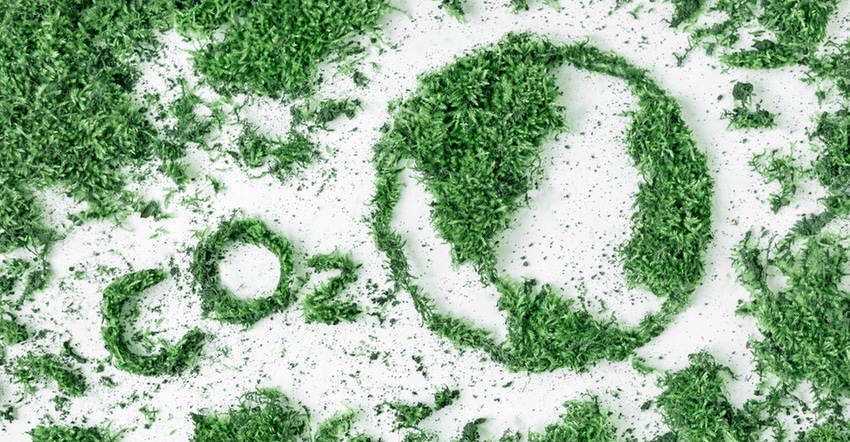Plastic’s Role in Accelerating a Low-Carbon, Sustainable Economy

Lighter is better. Using less is better. Especially when it comes to reducing carbon emissions.
As a surge of companies commit to carbon neutrality in the coming years, many are left with taking a hard look at their enterprise and supply chains as they build their plans for a path forward. It won’t be a simple process. But this much we know is true: To achieve carbon neutrality, we need to drastically reduce the environmental burden of our choices, if we hope to improve our quality of life and achieve a sustainable future for all.
Plastic materials are an indispensable part of modern life, yet plastic waste is profoundly impacting our environment. As business leaders, we are uniquely positioned to deliver the right equation to reach zero waste and zero carbon solutions, while jointly providing the goods and services people need to thrive and prosper.
The plastic paradox: Finding the right equation to reduce plastic waste and carbon emissions
As a 30-year+ veteran in packaging and sustainability, I am intimately familiar with both the enormous benefits and challenges that plastics have had on our world. Today, there’s a lot we can do to reduce plastic waste and make significant progress on carbon reductions. This requires a lifecycle view of our products and the systems where plastics are used. It means adopting new use models to reduce consumption, as well as putting an aggressive focus on designing products that are economically viable for recycling with the lowest environmental impact across their lifespan.
Therein lies the paradox: While the production and use of plastics creates greenhouse gas emissions, the use of plastics also reduces emissions when compared to alternatives. While that part of the equation isn’t always obvious, it is equally important to consider in designing a low-carbon future. If we can’t viably eliminate all consumption entirely – and I’m pretty sure we can’t – then we need to consider both pieces of information: emissions from production and emissions across the supply chain. To start the zero-carbon process, companies should evaluate material and environmental costs during the use phase, fuel efficiency in shipping, as well as the optimal materials to protect the product in the first place.
Variable One: How to use less energy when shipping goods
Plastics often play an unrecognized role in broader conversations on emissions offset, but they are a crucial material for shipping and preserving our most important products like food and wellness. And since those products are where most of our emissions come from, it’s important that we consider the entire system to achieve the lowest carbon solution. What most people don’t realize is that while plastics are most commonly produced from natural gas and other fossil resources, they often use less energy to make and produce fewer greenhouse gas emissions than alternatives, like glass and corrugated (cardboard).
Imagine if all our goods from mouthwash to lettuce were shipped in glass bottles or metal containers. On face value, these materials might appear more sustainable, but they also require energy to produce and are much heavier to transport, resulting in more CO2 emissions during production and the initial distribution phase, as well as during collection for recycling.
It’s important to think about the benefits of a material product, like plastic, at the same time we consider how to reduce its negative impact. This means accelerating efforts underway to develop 100% recyclable plastic products, as well as create new plastics from used products to help close the loop on plastic waste. If we focus on the reduction of system-wide greenhouse emissions and the elimination of plastic waste at the same time, we can drive toward solutions that allow for a higher quality of life, now, and help ensure a more sustainable ecosystem for future generations.
Variable Two: How to deliver greater fuel efficiency
Another piece of the puzzle in reducing emissions in the supply chain is fuel efficiency. When plastic is eliminated in favor of using other materials, like steel, automobiles are heavier and therefore require more fuel. They also require more powerful engines, which adds more weight and requires even more fuel. Since 2004, automobile fuel efficiency has climbed 29%, while related greenhouse gas emissions have fallen by 23%.
The shift toward electric vehicles is made possible by plastic. The malleable material allows manufacturers to make lighter weight, longer range, higher performance vehicles that environmentally conscious consumers will actually purchase and drive. To date, plastics have played a huge part in that success by providing lightweight and durable materials for both conventional and electric vehicles.
Variable Three: How to consider the right product materials for a neutral environmental cost
Finding the right material for products and packaging – from glass to plastic to metal – is vital to sustainability. Looking beyond surface appearance, it’s important to find the right balance between the recycling rates of a material plus the overall carbon costs. Brands and manufacturers should evaluate their products against these variables when solving for sustainability.
Recent research has found that the environmental impact of alternatives to using plastic in consumer good applications is 3.8 times higher than plastic itself. That’s one reason plastics are the preferred packaging choice for so many globally traded goods. It’s important to note that the statistic doesn’t mean plastics are always better, it just means that plastics are better in the applications where they are currently used – which is, of course, why they are used in the first place.
We’ve got to get the science right to ensure that when businesses make informed choices about the materials used, those decisions provide the benefits they are intended to provide. In this way, we achieve a balance between offering benefits to people that are meaningful, lasting and truly sustainable.
A ticking clock on climate: Plastics play an important role in the path forward for carbon neutrality
In the coming months, there will be several key moments for decision makers and world leaders on climate action. This fall’s gathering at COP26 to accelerate the Paris Agreement will be a critical inflection point in climate change. Business will have a key role in supporting this process with pathways for innovation and tangible roads to reduce CO2, especially in supply chains. And businesses will be responsible for implementing many of the innovative solutions that will drive changes in society.
Plastics are an indispensable part of our economic growth and a vital part of our journey toward a lower-carbon future. As the world considers its next steps in the fight against climate change, scientifically informed conversations on how plastics play a dynamic role in achieving carbon neutrality and a sustainable future will be critical.
About the Author(s)
You May Also Like


